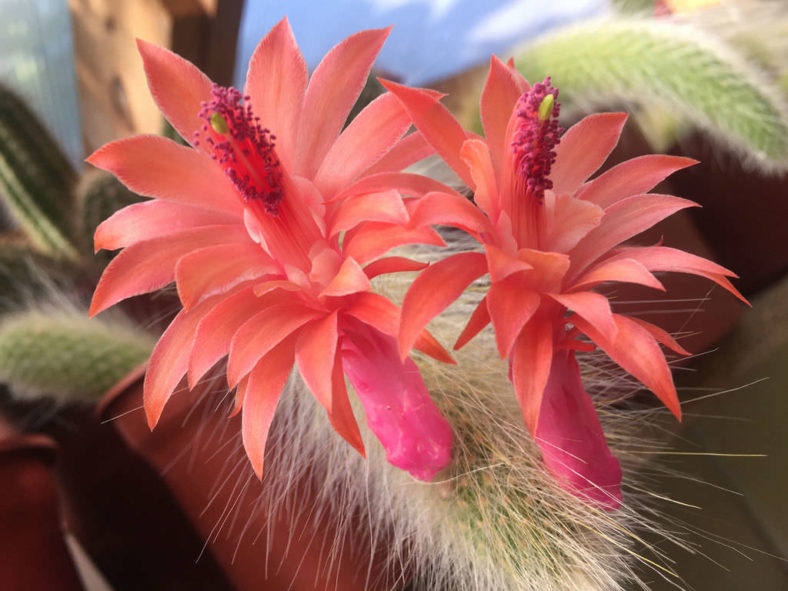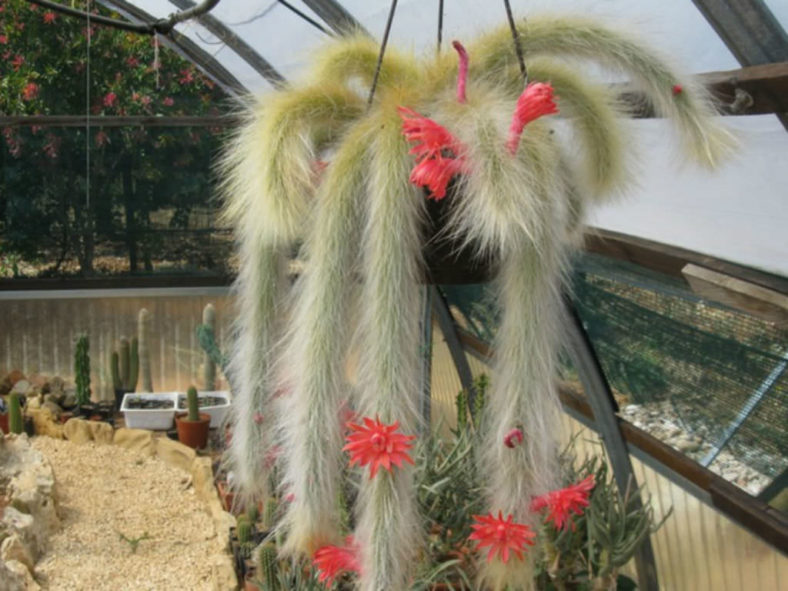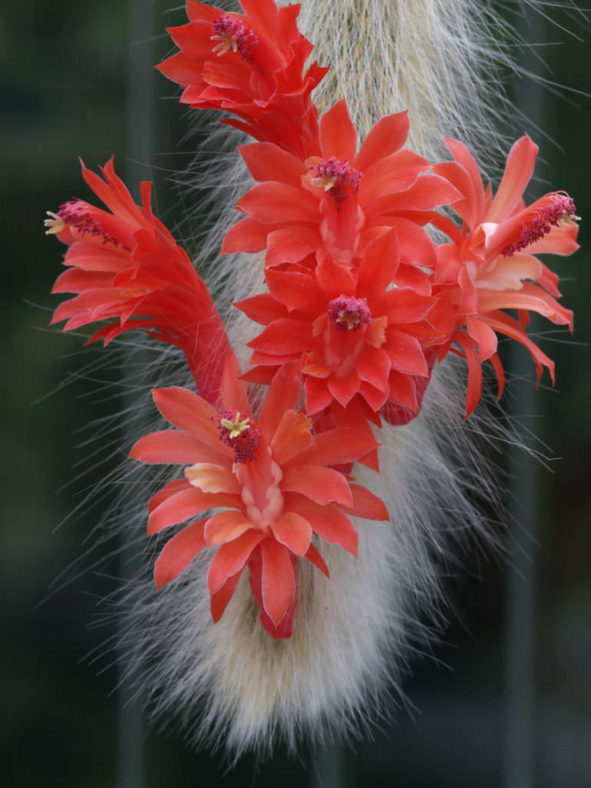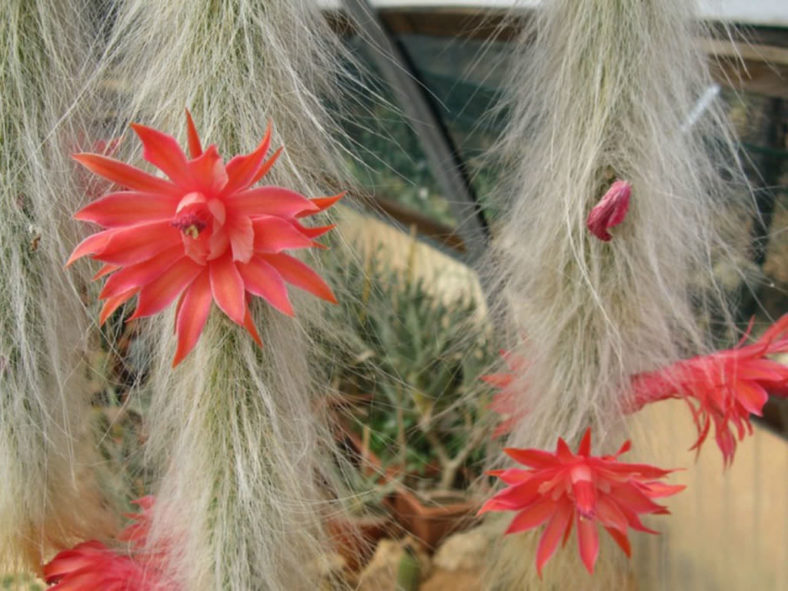Scientific Name
Cleistocactus winteri subsp. colademono D.R. Hunt
Common Name(s)
Monkey's Tail, Rat Tail
Synonym(s)
Borzicactus colademononis, Cleistocactus colademononis, Cleistocactus winteri subsp. colademononis, Hildewintera colademononis, Winterocereus colademononis
Scientific Classification
Family: Cactaceae
Subfamily: Cactoideae
Tribe: Trichocereeae
Genus: Cleistocactus
Origin
Cleistocactus winteri subsp. colademono is endemic to Bolivia. It occurs in Florida province in the Santa Cruz Department, about 30 kilometers east of Samaipata, a small town in the eastern foothills of the Bolivian Andes.
Description
Cleistocactus winteri subsp. colademono, also known as Cleistocactus colademononis, is an attractive cactus with light green, cylindrical stems densely covered with white, hair-like spines. It branches at the base and grows as an epilithic cactus on rocks in its natural habitat. The stems can grow up to 8.2 feet (2.5 m) long and 2.8 inches (7 cm) in diameter, upright at first, becoming pendulous with age. The common name Monkey's Tail refers to the appearance of the stems.
The bright red flowers appear from late spring to early fall. They can reach a length of 3.2 inches (8 cm) and a diameter of 2 inches (5 cm). The reddish, more or less spherical fruits contain black seeds and can grow up to 0.5 inches (1.2 cm) in diameter.

Hardiness
USDA hardiness zones 9a to 11b: from 20°F (6.7°C) to 50°F (10°C).
How to Grow and Care
Choose a location that gets full sun and has well-draining soil. Water Cleistocactus when the top inch (2.5 cm) of soil dries during the spring and summer. Reduce watering to every five weeks during the fall if the ground dries out. In winter, keep your cactus dry, or the moist ground combined with the cool temperatures and dormancy may cause the roots to rot. Fertilize with a low-nitrogen fertilizer during the active growth period. A slow-release fertilizer applied in the spring will be sufficient for the year.
It is possible to propagate by cutting a small branch from a Cleistocactus and rooting it, but this inevitably leaves a disfiguring scar near the main stem's base. If an offset is removed for propagation, remember to let it dry for a week or so, allowing the wound to heal. Rooting usually occurs within 3 to 8 weeks. Therefore, it is best to raise Cleistocactus from seed. Be sure to get the seeds from a reputable source.
Learn more at How to Grow and Care for Cleistocactus.
Links
- Back to genus Cleistocactus
- Succupedia: Browse succulents by Scientific Name, Common Name, Genus, Family, USDA Hardiness Zone, Origin, or cacti by Genus
Photo Gallery
Click on a photo to see a larger version.


